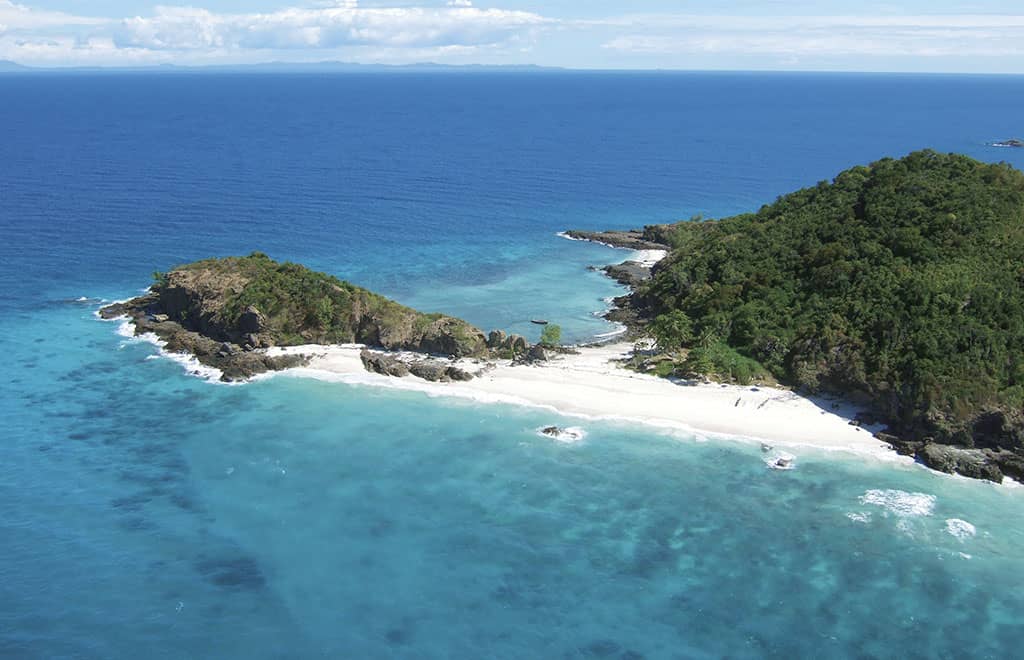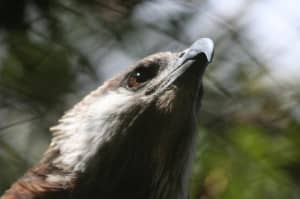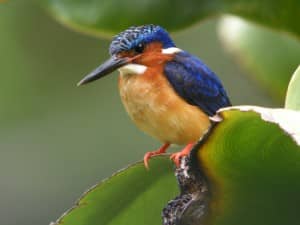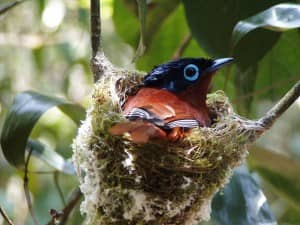Madagascar, a biological hotspot renowned for its extraordinary biodiversity, has captivated explorers and naturalists for centuries.
From lemurs to chameleons, Madagascar’s wildlife is legendary. But beyond the iconic creatures, the island is also a birder’s dream. Home to an astonishing array of endemic and exotic species, Madagascar offers unparalleled opportunities for bird watching to witness nature’s wonders in flight.
Let’s now embark on a journey to discover some of Madagascar’s most spectacular birds that you’ll may be able to spot when you visit the island.
Madagascar Fish-Eagle
The large Madagascar fish-eagle (Haliaeetus vociferoides) is a true giant among local birds of prey. With its impressive size and striking appearance, no wonder why it’s the national bird of the island.
Distinctive Appearance
Characterised by its dark reddish-brown body and contrasting dark brown wings, the fish-eagle is a magnificent specimen. If you look closer, you’ll notice a striking contrast between the bird’s dark plumage and its pure white head, cheeks, and short tail.
Juvenile Features
Young fish-eagles display a plumage distinct from their adult counterparts. Their heads are adorned with subtle streaks, while their flight feathers exhibit pale fringes.
The underparts of juvenile birds are paler in comparison to adults, and their tails tend to be darker.
Hunting and Behaviour
A creature of aquatic habitats, the Madagascar fish-eagle is often spotted soaring above or diving into water to capture its prey. When not actively hunting, these birds exhibit a preference for tall trees, where they perch for extended periods, surveying their domain.
A Melodic Call
The fish-eagle’s vocal repertoire includes a melodious call, remarkably like that of its close relative, the African fish-eagle (Haliaeetus vocifer). This haunting cry adds to the allure of this extraordinary bird.
The Vibrant Madagascar Kingfisher
The Madagascar Kingfisher, scientifically known as Alcedo vintsioides, is a striking member of the kingfisher family (Alcedinidae).
One of the endemic species of Madagascar’s wildlife and the nearby island of Mayotte, this captivating bird thrives in the lush environment of subtropical and tropical mangrove forests.
A Water-Loving Aviator
The Madagascar Kingfisher exhibits a strong affinity for aquatic habitats. Beyond its preferred mangrove homes, this species can be found flourishing in various wetland ecosystems and along the island’s coastline.
Interestingly, there are no discernible differences in appearance between male and female kingfishers.
A Diet for a Kingfisher
As a quintessential kingfisher, the Madagascar species primarily subsists on a diet of fish.
Its sharp beak and agile body are perfectly adapted for diving into water to catch its prey. However, it is not exclusively piscivorous and may also consume aquatic insects, crustaceans, and small amphibians.
A Flash of Blue
The Madagascar Kingfisher is renowned for its vibrant plumage, and we truly wish you could spot it during a walk around the island.
Noticeable by a brilliant blue upper body, contrasting with a rich orange-red underside, this bird is a visual spectacle. Its long, sharp beak is typically black, further enhancing its striking appearance.
Conservation Concerns
While the Madagascar Kingfisher is not currently classified as threatened, it faces challenges due to habitat loss and degradation.
Deforestation and the encroachment of human settlements into wetland areas pose significant risks to its survival.
Conservation efforts focused on protecting mangrove forests and other wetland habitats are crucial for the long-term persistence of this species.
The Endemic White throated rail
We could enumerate infinite reasons to visit Madagascar and let’s expose one of them.
The Aldabra rail, a fascinating flightless bird, holds the distinction of being the sole surviving member of its kind in the western Indian Ocean. This unique creature is often classified as a subspecies of the white-throated rail (Dryolimnas cuvieri).
Distinctive Physical Attributes
The white-throated rail is characterised by a slender build, accentuated by a long, graceful neck. Its legs and feet are proportionally slender, adaptations suited to its terrestrial lifestyle.
The bird’s plumage is predominantly a striking chestnut brown, interrupted by a captivating white throat, which lends the species its common name.
Bill Variations and Juvenile Plumage
The rail’s bill is notably long and straight, typically dark in colour. However, sexual dimorphism is evident in bill coloration, with females showcasing a vibrant pink base while males exhibit a duller, dark red base.
Young white-throated rails generally possess a less vivid plumage compared to adults.
Adaptations to a Flightless Life
As a flightless bird, the white-throated rail has undergone evolutionary adaptations. Its wings are significantly reduced in size, often blending seamlessly with the body contour.
This morphological feature is a testament to the bird’s reliance on terrestrial locomotion rather than aerial flight.
Madagascar Paradise Flycatcher
Often hailed as the symbol of Constance Tsarabanjina, the Madagascar Paradise Flycatcher is a captivating bird species. This medium-sized passerine measures approximately 18 centimetres in length and weighs around 12.2 grams.
A Tale of Two Sexes
There is a striking difference between male and female Madagascar Paradise Flycatchers.
Males are renowned for their extravagant plumage, particularly their elongated tail feathers. These stunning plumes can extend up to 18 centimetres, contributing significantly to the bird’s overall length.
In contrast, females exhibit a more subdued appearance, dominated by a rufous orange colour with a striking black head and nape. Their wings feature black flight feathers adorned with rufous edges, while a delicate, light blue eyelid wattle adds a touch of elegance.
Habitat and Behaviour
The Madagascar Paradise Flycatcher is typically found in lowland rainforests and secondary growth habitats. These birds are known for their acrobatic flight, as they deftly manoeuvre through the forest canopy in search of insects, their primary food source.
Their long tail feathers, while visually striking, do not appear to hinder their agility. During the breeding season, males engage in elaborate courtship displays, showcasing their impressive plumage to attract females.
Challenges for Conservation
Like many of Madagascar’s endemic species, the Madagascar Paradise Flycatcher faces threats due to habitat loss and degradation. Deforestation for agriculture and timber extraction has significantly reduced the extent of suitable habitat for this species.
Conservation efforts focused on protecting remaining rainforest areas and implementing sustainable land-use practices are crucial for its survival.
Take part in a bird watching trip in Madagascar
Now, go immerse yourself in a birder’s paradise with a trip to Madagascar. Get a guide and discover this extraordinary island’s unparalleled diversity of avian life, boasting hundreds of endemic birds’ species.
From the majestic Madagascar Fish-Eagle to the elusive Paradise Flycatcher, every corner of the island offers unique encounters. Experience the thrill of spotting rare and colourful birds, while contributing to vital conservation efforts.








No Comments